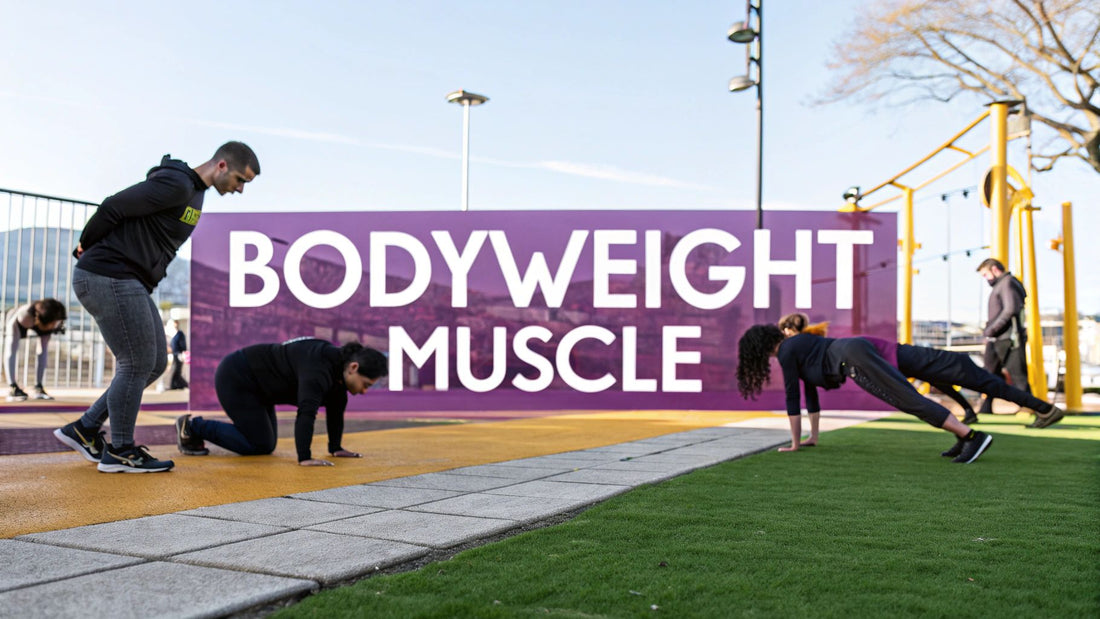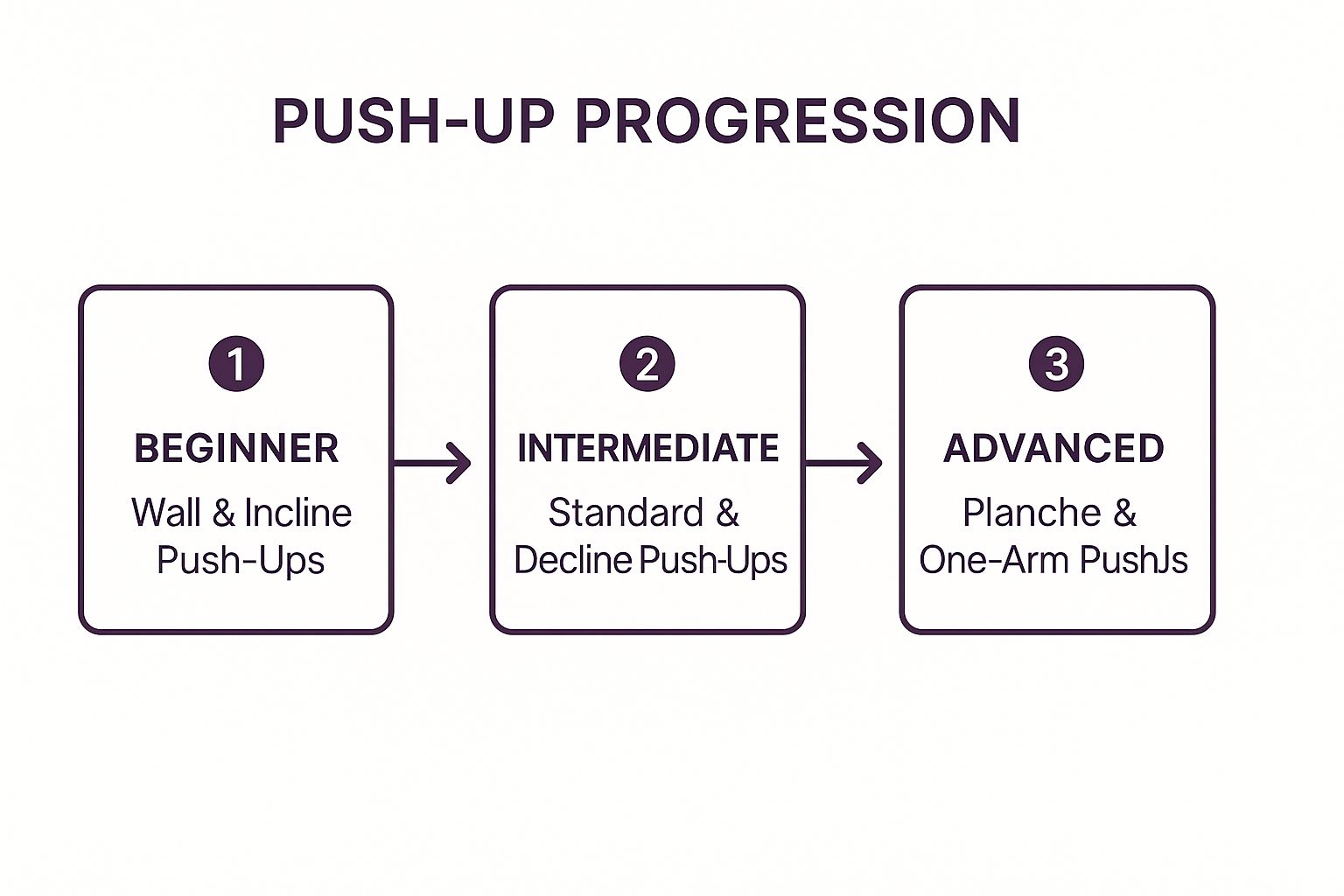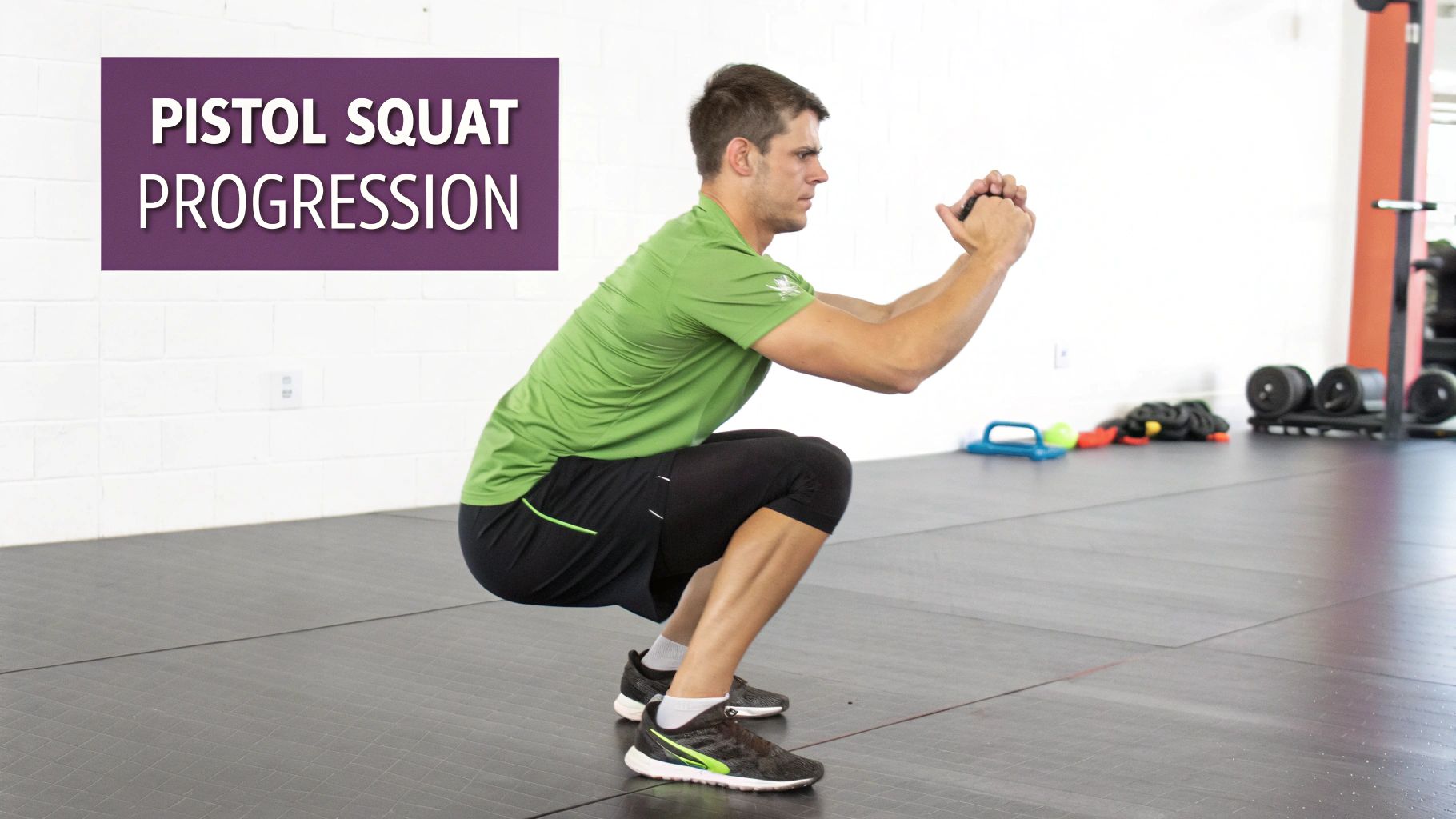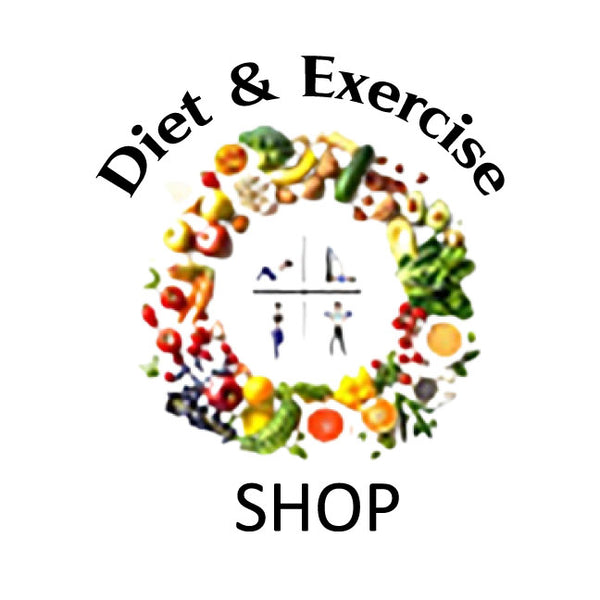
8 Bodyweight Exercises for Muscle Building in 2025
Think you need a gym membership and a rack of heavy weights to build serious muscle? It's time to reconsider.
Your own body is the most powerful tool you have for forging a strong physique. This guide is your ultimate resource for the most effective bodyweight exercises for muscle building, designed to deliver real results.
We will dive deep into the techniques and progressions that make bodyweight training so effective. You'll learn how to apply progressive overload to simple movements, transforming them into potent muscle-building tools.
This listicle breaks down each exercise with a focus on proper form, actionable tips, and the critical diet principles needed to fuel your growth. Whether you're a beginner or an advanced athlete, these exercises will push your limits.
To support your journey, consider our exclusive training apparel from dietexerciseshop.com. Our gear is engineered for maximum comfort and performance during your toughest workouts. Ready to unlock your body's potential? Let's begin.
1. Progressive Push-Up Variations
The push-up is a foundational movement. Its true power for muscle building is unlocked through progressive overload. This method involves increasing the difficulty to continuously stimulate the chest, shoulders, and triceps.
Instead of adding weight plates, you manipulate leverage, stability, and body positioning. This creates more resistance and makes it one of the most versatile bodyweight exercises for muscle building.
How to Implement Progressive Push-Ups
Start by mastering the basics. A solid goal is to perform 3 clean sets of 20 standard push-ups. Once you achieve this, you can start exploring harder variations.
- Maintain a Hollow Body: Keep your core tight and your spine neutral. Avoid letting your hips sag or rise too high.
- Control the Tempo: Use a slower tempo, like 3 seconds down and 1 second up, to increase time under tension.
- Protect Your Shoulders: Position your elbows at a 45-degree angle to your body, not flared out to the sides.
- Film Yourself: Record your form to check your alignment and ensure you're performing the movement correctly.
The infographic below outlines a clear progression path. This visual guide shows that the journey begins with mastering foundational movements before tackling complex variations that build serious strength.

This exercise, when combined with proper nutrition, is a cornerstone of building upper body mass. Eating enough protein is essential for repairing the muscle fibers you break down during push-ups. A simple rule is to consume at least 1 gram of protein per pound of body weight daily.
2. Pull-Up and Chin-Up Progressions
The pull-up is the king of upper-body exercises. Its potential for muscle growth is realized through systematic progression, which makes it a cornerstone of bodyweight exercises for muscle building.
This method involves improving your strength, leverage, and control. It targets the back, biceps, and forearms with unparalleled efficiency. The goal is to build a strong foundation and then advance to more challenging variations.
How to Implement Pull-Up Progressions
Mastering the fundamentals is crucial. A great initial target is to hold a dead hang for 30-60 seconds and perform several slow, controlled negative reps.
- Build Foundational Strength: Start with dead hangs to develop grip strength. Then, introduce negative reps by lowering yourself as slowly as possible.
- Focus on Technique: Initiate the pull by retracting your shoulder blades and driving your elbows down and back.
- Maintain Full Range of Motion: A quality rep goes from a full dead hang to your chin clearing the bar.
- Use Assistance Wisely: If needed, use resistance bands to practice the correct form with less weight.
A structured progression is key to developing strength. To get the most out of your training, equip yourself with the right tools. Our high-quality Pull Up Assistance Bands are perfect for beginners and those looking to perfect their form. They provide the support you need to build strength safely and effectively. You can find them on our website, dietexerciseshop.com.
3. Pistol Squat Progression
The pistol squat is a unilateral powerhouse. Its value for muscle building lies in a gradual, step-by-step progression. This method breaks down the movement into manageable stages, allowing you to build the required strength, balance, and mobility over time.
Instead of just attempting the final exercise, you use variations to increase the demand on your quads, glutes, and hamstrings. This makes it one of the most effective bodyweight exercises for muscle building.

How to Implement the Pistol Squat Progression
Start with foundational single-leg strength. Mastering exercises like Bulgarian split squats is crucial before progressing.
- Start with Support: Use a box or chair to perform assisted pistol squats. Sit down onto the box with one leg extended, then drive back up.
- Use a Counterbalance: Hold a light weight out in front of you. This shifts your center of gravity and makes balancing easier.
- Improve Ankle Mobility: Poor ankle mobility is a common limiting factor. Regularly perform calf stretches to increase your range of motion.
- Drive Through the Heel: Focus on pushing through the heel of your standing leg to ensure proper muscle activation.
This progression path ensures you build the necessary components for a safe and powerful pistol squat. Watch the video below from the Diet & Exercise YouTube channel for a visual guide on mastering single-leg strength.
4. Dip Progressions
Often called the "upper body squat," the dip is a powerhouse compound movement. It is renowned for building mass in the chest, shoulders, and triceps.
Its potential is realized through strategic progression. You systematically increase the challenge by altering leverage and stability, making dips one of the most effective bodyweight exercises for muscle building.
How to Implement Dip Progressions
You must master the fundamental movement before attempting advanced variations. A strong benchmark is to complete 3 clean sets of 12-15 parallel bar dips.
- Protect Your Shoulders: Keep your shoulder blades pulled down and back. Avoid letting your shoulders shrug up toward your ears.
- Control the Negative: Emphasize the eccentric (lowering) phase by taking 2-3 seconds to descend.
- Target Specific Muscles: To focus on your chest, lean your torso forward. To emphasize your triceps, keep your body upright.
- Use Full Range of Motion: Lower yourself until your upper arms are at least parallel to the floor.
Proper equipment can make a huge difference in your dip progression. For those training at home, our Parallel Dip Bars provide a sturdy and reliable platform to perfect your form and build serious upper body strength. They are adjustable and portable, making them a perfect addition to any home gym setup at dietexerciseshop.com.
5. Hanging Leg Raises and Core Progressions
Hanging leg raises are supreme for building a powerful, well-defined core. These exercises require you to hang from a bar and lift your legs, creating intense resistance that targets the entire abdominal wall.
Moving from simple knee tucks to advanced movements like toes-to-bar is a proven method for progressive overload. This makes it one of the most effective bodyweight exercises for muscle building.
How to Implement Hanging Core Progressions
The key is to master form and control before advancing. Focus on muscle contraction rather than momentum.
- Engage Your Abs First: Initiate the movement with a posterior pelvic tilt to ensure your abdominals do the work.
- Control the Negative: Lower your legs slowly and deliberately, taking 3-4 seconds for the eccentric phase.
- Prevent Swinging: Keep your body stable by engaging your lats and shoulders.
- Start with Knee Raises: If straight-leg raises are too difficult, begin with hanging knee raises.
- Exhale Forcefully: Breathe out sharply as you raise your legs to achieve a stronger contraction.
These exercises are demanding, so prioritizing recovery is essential. Discover more post-workout strategies to repair muscle and reduce soreness by exploring our guide on how to recover faster.
6. Ring Training and Gymnastic Movements
Ring training introduces instability to bodyweight exercises, forcing your muscles to work harder. This constant tension makes it one of the most effective methods for building functional strength and lean muscle mass.
By performing exercises on gymnastic rings, you engage a greater number of muscle fibers. This leads to superior upper-body development. The instability demands complete control, turning basic exercises into potent muscle-building challenges.
How to Implement Ring Training
Begin with foundational movements to build stability and strength. A good starting point is mastering 3 sets of 10-12 clean ring rows.
- Focus on Control: Prioritize slow, controlled movements. The goal is to eliminate swinging and maintain tension.
- Adjust Difficulty with Body Angle: A more horizontal body position increases the difficulty. A more vertical position makes it easier.
- Turn the Rings Out (RTO): At the top of pressing movements, externally rotate your shoulders to turn your palms forward.
- Master the False Grip: For advanced skills like the muscle-up, learning to use a false grip is essential.
For those serious about this advanced training style, our Wooden Gymnastic Rings are a must-have. They provide excellent grip and durability for a wide range of exercises, from ring rows to muscle-ups. Elevate your training by adding this versatile tool from dietexerciseshop.com to your arsenal.
7. Handstand Push-Up Progressions
The handstand push-up is the ultimate vertical pressing movement. It builds powerful shoulders, traps, and triceps with only your body weight.
This advanced exercise requires you to press your entire body weight in an inverted position. Its mastery signifies a high level of strength, balance, and motor control, providing a stimulus for muscle growth that few other exercises can match.
How to Implement Handstand Push-Up Progressions
Building up to a handstand push-up requires a systematic approach. You must first build shoulder stability and pressing strength through easier variations.
- Establish a Stable Base: Practice holding a wall-supported handstand for at least 60 seconds.
- Control the Depth: Start with partial reps, placing a cushion or abmat under your head.
- Maintain a Hollow Body: Keep your core engaged and glutes squeezed to maintain a straight line.
- Protect Your Wrists: Condition your wrists with mobility exercises and position your hands shoulder-width apart.
Patience is the most critical part of this progression. Rushing into the full movement without building the prerequisite strength is a common cause of injury. Focus on perfect form at each stage to ensure you are building functional strength safely.
8. Nordic Curl and Hamstring Isolations
The Nordic hamstring curl is a powerful eccentric-focused movement. Its potential for muscle growth is realized when used as a specialized isolation tool.
The exercise involves securing your ankles and lowering your torso forward, using only your hamstrings to control the descent. This creates immense eccentric tension, a key driver of hypertrophy. This makes it one of the most effective bodyweight exercises for muscle building for the posterior chain.
How to Implement Nordic Curls
The Nordic curl is an advanced exercise, so it is crucial to start with assisted variations and focus on perfect form. The primary goal is to master the eccentric (lowering) phase.
- Start with Assistance: Use a heavy resistance band anchored in front of you to help control the movement.
- Prioritize the Eccentric: Focus only on the lowering portion. Aim for a slow, controlled 3-5 second descent.
- Maintain a Straight Line: Keep your hips fully extended and your body rigid from your knees to your head.
- Control Your Volume: This exercise is highly demanding. Start with just 1-2 sets of 3-5 reps, once or twice a week.
Strong hamstrings are crucial for overall leg development and injury prevention. To aid your progress, our durable Resistance Loop Bands from dietexerciseshop.com can provide the perfect amount of assistance for Nordic curls, allowing you to build strength progressively and safely.
8 Bodyweight Muscle-Building Exercise Comparison
| Exercise Progression | Implementation Complexity 🔄 | Resource Requirements ⚡ | Expected Outcomes 📊 | Ideal Use Cases 💡 | Key Advantages ⭐ |
|---|---|---|---|---|---|
| Progressive Push-Up Variations | Moderate; requires gradual strength build and form mastery | Minimal; flat surface needed | Muscle hypertrophy, functional pressing strength, core stability | General fitness, calisthenics, military training | Scalable difficulty; low injury risk; builds core control |
| Pull-Up and Chin-Up Progressions | Moderate to high; requires pull-up bar and grip strength | Pull-up bar or similar equipment | Lat and arm hypertrophy, grip strength, V-taper development | Back and arm mass building, rock climbing, military | Most effective for back; scalable load; builds grip |
| Pistol Squat Progression | High; requires balance, mobility, and coordination | Minimal; box or support optional | Single-leg strength, balance, quad/glute hypertrophy | Rehab, unilateral strength correction, calisthenics | Corrects imbalances; minimal equipment; quad/glute focus |
| Dip Progressions | Moderate to high; shoulder mobility essential | Parallel bars, rings, or substitutes | Chest, triceps hypertrophy and pushing strength | Upper body mass gain, gymnastics, obstacle course | Superior chest/triceps activation; easy to add weight |
| Hanging Leg Raises and Core Progressions | Moderate; grip and shoulder stability needed | Pull-up bar or hanging apparatus | Core hypertrophy, spinal decompression, hip flexor strength | Core development, gymnastics, climbing | Superior abs activation; scalable; joint-friendly |
| Ring Training and Gymnastic Movements | High; instability increases difficulty significantly | Gymnastic rings and strong anchor | Full-body strength, stabilizer activation, joint-friendly | Functional strength, gymnast training, rehab | Superior stabilizer engagement; portable; joint-friendly |
| Handstand Push-Up Progressions | Very high; requires advanced strength, balance, and mobility | Wall or stable surface | Elite shoulder/upper body hypertrophy and pressing strength | Gymnastics, advanced calisthenics | Exceptional shoulder development; full-body control |
| Nordic Curl and Hamstring Isolations | High; very challenging eccentric exercise | Ankle anchor or partner needed | Hamstring hypertrophy, injury prevention | Injury prevention, posterior chain focused training | Superior eccentric stimulus; proven injury reduction |
Fuel Your Gains and Master Your Body
You have now explored a comprehensive arsenal of bodyweight exercises for muscle building. This list is a blueprint for unlocking your body's potential, proving you don't need a gym to build a strong, muscular physique.
The journey to building muscle is built on a few core principles. Remember that progressive overload is the engine of your growth. You must consistently challenge your muscles by advancing through the exercise progressions outlined. Each small step forward sends a powerful signal to your body to adapt and grow stronger.
Unifying Movement with Nutrition and Recovery
These powerful exercises are only one part of the equation. True transformation happens when you align training with intelligent nutrition and dedicated recovery. Your body cannot build muscle without the right raw materials.
Prioritize a diet rich in high-quality protein, consume adequate carbohydrates to fuel your workouts, and include healthy fats to support hormone function.
Key Takeaway: Consistent training paired with a protein-rich diet and adequate rest is the trifecta for successful muscle building. Neglecting any one of these pillars will significantly hinder your progress.
Equally important is rest. Muscle growth happens when you sleep and recover. Aim for 7-9 hours of quality sleep per night. Think of your training as the stimulus and your nutrition and rest as the environment where growth occurs.
Your Actionable Path Forward
It's time to move from knowledge to action. Here are your next steps:
- Assess Your Starting Point: Honestly evaluate your current strength levels and choose the appropriate progression.
- Structure Your Routine: Create a balanced workout plan that hits all major muscle groups throughout the week.
- Track Your Progress: Keep a training log. Note the exercises, sets, reps, and rest periods for each workout.
- Stay Consistent: Consistency is your greatest ally. The cumulative effect of consistent effort creates dramatic, lasting change.
For a deeper dive into structuring your workouts, explore the expert tutorials on the Diet & Exercise YouTube channel. Visualizing the movements can make all the difference. Mastering these bodyweight exercises for muscle building is a journey of discipline and self-discovery.
Ready to enhance your mental focus and recovery routine? After a tough bodyweight session, unwinding is crucial for growth. The unique Diet and Exercise coloring books are designed to help you de-stress and focus your mind, creating the perfect mental state for physical recovery and preparing you for your next challenge. Explore our collection at dietexerciseshop.com and add a powerful mental tool to your physical fitness arsenal.
